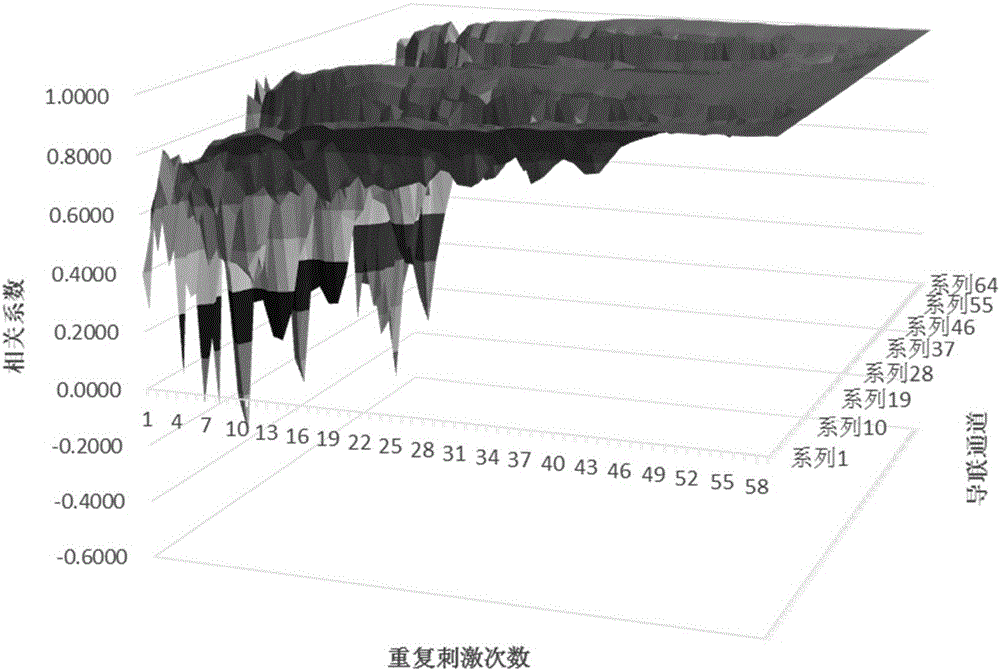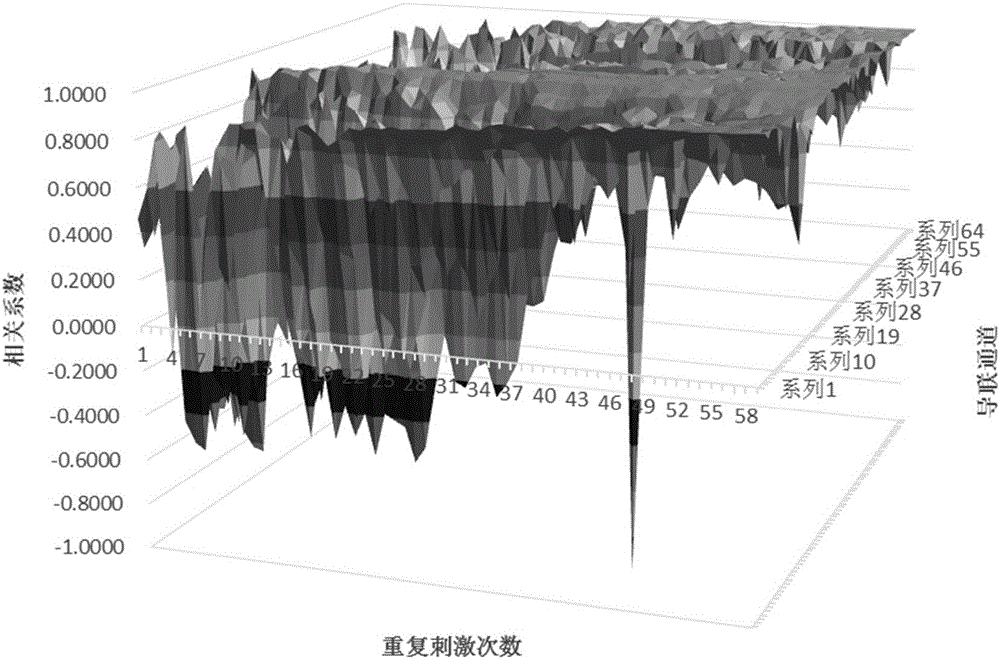Evoked potential extracting method based on random gradient adaptive filtering
A technology for inducing EEG and stochastic gradients, applied in the field of neural information, to achieve the effects of high practical value, cost reduction, and simple and fast calculation
- Summary
- Abstract
- Description
- Claims
- Application Information
AI Technical Summary
Problems solved by technology
Method used
Image
Examples
Embodiment
[0019] In this embodiment, a 64-channel EEG measurement device is used as an example to collect EEG signals and obtain corresponding measurement signals. At the same time, the number of repeated stimulations was set to 59 times, the sampling rate was 1024 Hz, the duration was 1.2 seconds, and the length N of the extracted signal was set to 200 milliseconds. The evoked EEG extraction of the present invention is realized by performing the following steps.
[0020] Step A: EEG signal acquisition and preprocessing.
[0021] A 64-channel EEG measurement device was used to record a visual repetitive stimulation test, and 64 channels of measurement signals were obtained. In order to ensure that the spontaneous EEG with a length of N is extracted, the interval between the initial moment of data recording of each measurement signal and the moment of the first stimulation should not be less than 200 milliseconds. In this embodiment, the data of 200 milliseconds before the first stimula...
PUM
 Login to View More
Login to View More Abstract
Description
Claims
Application Information
 Login to View More
Login to View More - R&D
- Intellectual Property
- Life Sciences
- Materials
- Tech Scout
- Unparalleled Data Quality
- Higher Quality Content
- 60% Fewer Hallucinations
Browse by: Latest US Patents, China's latest patents, Technical Efficacy Thesaurus, Application Domain, Technology Topic, Popular Technical Reports.
© 2025 PatSnap. All rights reserved.Legal|Privacy policy|Modern Slavery Act Transparency Statement|Sitemap|About US| Contact US: help@patsnap.com



